Street Tree Design
search the Original Green Blog
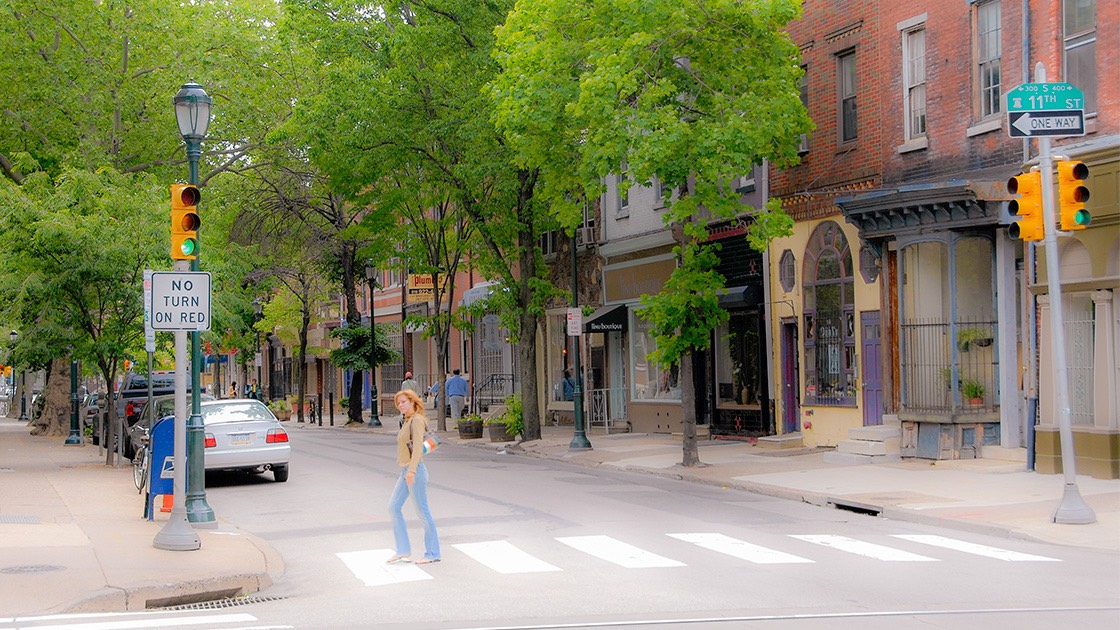
Street trees are essential for strong Walk Appeal almost anywhere in the US, which makes them a fundamental part of the public frontage, which extends from the property line to the edge of the street. We’ll talk about other public frontage parts later, but street trees are so important that they warrant their own discussion. Two things will be apparent when we look at street trees and other public frontage parts: First, none of this is rocket science; simple rules of thumb cover most of these parts. On the other hand, it’s shocking how often a city, a Department of Transportation, or a developer gets them wrong… so do what you can to get people informed in your city or town.
Why Should We Plant Street Trees?
There are many reasons to plant street trees (most of which will be in a later post), but the two most obvious ones are closely intertwined: Walk Appeal and sustainability. In most of the US, a street without trees is a street where people rarely walk, and therefore almost always drive. This is bad for our towns, our wallets, and our waistlines.
Street Tree Types
If you’re not in a US state with a Canadian border, you really need street trees to shade the sidewalk. And if you’re North of New Orleans, those street trees should be be deciduous so they drop their leaves in winter so you can walk in the relative warmth of a winter sun. From New Orleans southward, shade is helpful throughout the year because it can be warm throughout most days of the year.
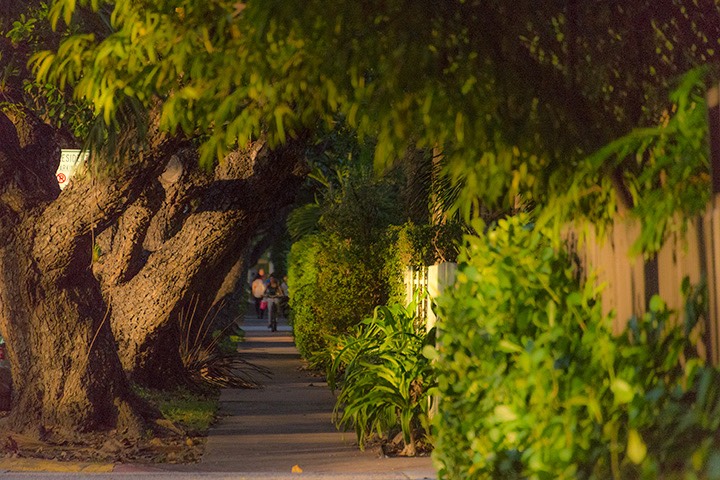
The type of street tree varies according to where you are in town. Along a Main Street, trees should be taller and more vertically-proportioned, so that when they’re mature, their lowest branches are 12-16 feet above the sidewalk so they don’t block business signs. Also, Main Street buildings typically pull right up to the street, so trees that are more vertically-proportioned don’t grow so hard up against the upper levels of the Main Street buildings. On a primarily residential street, the trees can be lower and spread more broadly because the buildings (mostly houses) are set further back from the street. The lowest branches only need to be a bit above the head height of a tall person.
Street Tree Spacing
Street trees should be planted roughly every 15-30 feet along a Main Street and every 25-50 feet along a primarily residential street. Start by planting a street tree at every property line. If the Main Street shops are really narrow (less than 15 feet wide) plant the trees on every other property line. If they’re really wide (more than 30 feet wide), plant the trees every 20 feet or so, but don’t plant them in front of the shops’ front doors. If you do, some shop-owners will sneak out at night and poison the trees.
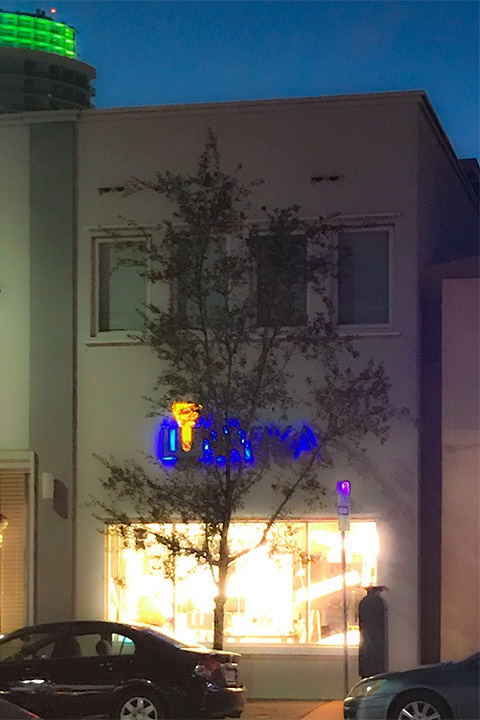
Alton Road street tree not yet
poisoned by the shop-owner
The Florida DOT had no clue about this basic rule when they rebuilt Alton Road on South Beach, so this is exactly what happened again and again. It’s a lose-lose deal for the business owners, because while killing the trees keeps their signs more visible, the sunburned sidewalks are not a place most people want to walk for most of the year. That’s why Alton Road today is by far the least-walked commercial street on South Beach. And this is in a place where 45% of the people don’t even own a car (because they don’t need them) and most of the tourists don’t rent cars as well. In other words, the Florida DOT through their ignorance killed a lot of real estate value on Alton Road. And yes, Alton has several glaring flaws that will take a lot of work to fix, but the street trees could have been done correctly, and at no additional cost.
Residential street trees planted every 25-50 feet along a street require only one tree on every property line on most residential streets in traditional neighborhoods. If the street is populated with narrow townhouses, it may require only one tree on every other property line whereas parts of the neighborhood with large lots (more than 50 feet wide) require two trees per lot.
Planting Street Trees
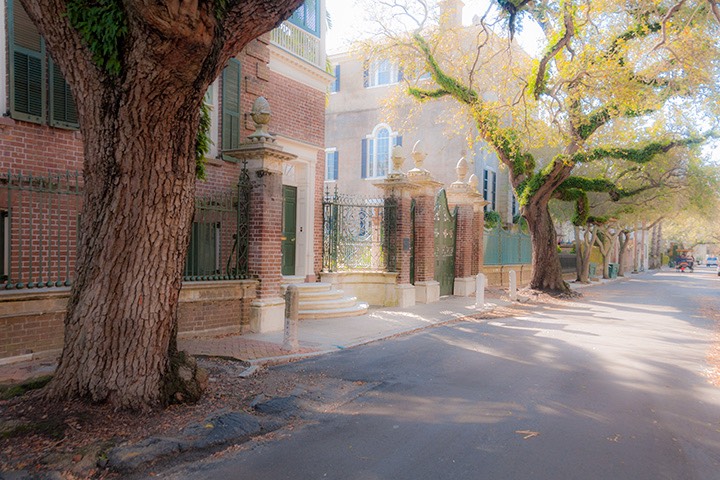
Trees should be planted either in swales (on primarily residentail streets) or in tree wells (on Main Streets). Do not listen to “urban foresters,” who insist that trees must be planted in landscape beds large enough for their mature drip lines. Their grand lie is legendary… if what they said were true, canopy streets like Meridian Avenue on South Beach would be impossible. They are terribly wrong about this, and need to be called out on it. These are street trees, after all, not forest trees. Primarily residential streets may have swales up to 5 feet wide and of indefinite length, whereas primarily commercial streets may have tree wells 5 feet square or smaller.
YES, “urban foresters” can specify trees that are unsuitable as street trees and will die on an urban street. Yes, they can specify planting conditions that will cause their self-fulfilling prophecies to occur. But hopefully, you live in a town where at least one good landscape architect knows which tree to plant and how to plant it so that it thrives for centuries. Go to Charleston, South Carolina… this isn’t just possible, but is commonplace.
~Steve Mouzon
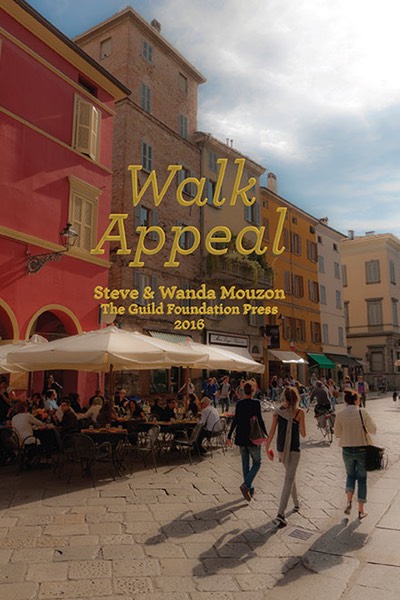
You'll receive an email from me with the subject line "Mouzon Design: Please Confirm Subscription." Click Yes to confirm your subscription for Walk Appeal book updates.
Legacy Comments
Adam Old · Director of Communications at TransitAlliance.Miami
has that Charleston street been paved with asphalt for centuries, or is it possible that it is a new material? I have seen huge grand old oak trees dropping whole limbs when the ground below them was asphalted.
Steve Mouzon · Board Member at Sky Institute for the Future
Adam, it has been paved since I was young... the first time I was ever on that street was in 1983, when I was right out of college. I'm sure it was cobblestones at some point, but the asphalt is not recent.
Jan 12, 2017 7:12am
558+
Why Walk Appeal?
search the Original Green Blog
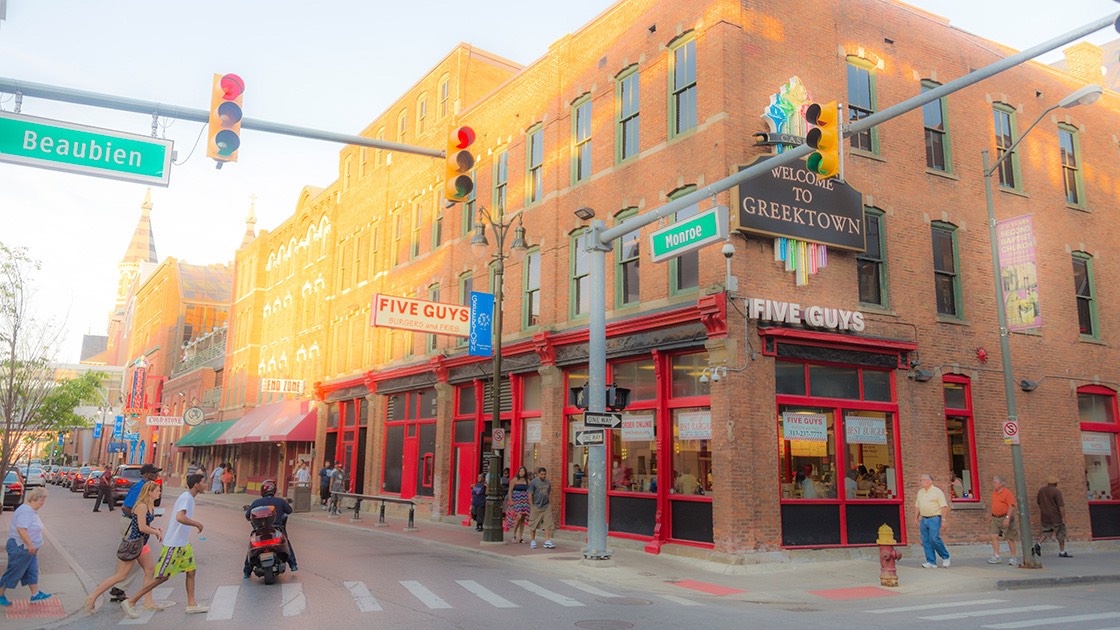
Do we want a cup of coffee that is merely drinkable? A meal that is just edible? A book that is only readable? Of course not! We want things that are aromatic, delicious, and engaging! So why should we settle for places that are merely walkable? Why not places where we love to walk?
35 years ago, walkability was a high and noble goal because the default settings of city-building created such hideously unwalkable places. But thanks in large part to the New Urbanism, we have learned how to build walkable places again. Walkability is now commonplace in places that adhere to New Urbanist principles. Today, we need a higher standard.
A place with strong Walk Appeal is one where it’s appealing to walk, not one where we’re merely able to walk. And Walk Appeal is one of the strongest indicators of the economic health, environmental health, and public health of a place.
Healthy Walk Appeal drives the prosperity of neighborhood businesses, and can even make the difference between failure, surviving, and thriving. And those neighborhood businesses have many benefits for the neighborhood, including eliminating food deserts, allowing people to make a living where they’re living, letting people walk to daily needs, and keeping the neighborhood safer because there are more eyes on the street.
Good Walk Appeal benefits the environment in several ways, especially including these two: It’s obvious that every trip on foot or on a bike burns fat instead of gas, keeping us healthier and wealthier, and keeping the air cleaner. What’s not so obvious is that when we spend time outdoors, we get acclimated to the local environment so that when we return indoors we may be able to throw the windows open and leave the air conditioner off. And there is no equipment so efficient as that which is off.
The greatest benefit of strong Walk Appeal, however, is what it does to our bodies. Places where people walk 10,000 steps per day as part of their daily activities have been proven to be healthier than those where people walk less, all other things being equal. Our obesity epidemic has ballooned as our walking has dwindled, and it brings many life-threatening illnesses such as heart disease and diabetes.
Finding a characteristic of the built environment that has such a powerful influence for good in making us healthier, or making our environment healthier, or making our neighborhoods healthier is wonderful. Finding a characteristic that does all three is far better. Walk Appeal is that characteristic, and it’s time to start improving it all across America.
~Steve Mouzon

You'll receive an email from me with the subject line "Mouzon Design: Please Confirm Subscription." Click Yes to confirm your subscription for Walk Appeal book updates.
Legacy Comments
Steve Dombek · Saint Petersburg, Florida
Steve, a little while back I tried introducing the idea that nearly all American streets are "One-Sided" places (even our good Main Streets), whereas the most beloved streets around the world are often "Two-Sided" places. It's a concept that's more easily illustrated with a few examples (make sure to play the GIF):
https://mobile.twitter.com/Stev.../status/658686569709105152
What makes a street into a Two-Sided place? I think it needs at least three things: (1) people-scaled amenities on both sides (e.g. shops, housing, parks) with minimal dead space, (2) a center "thoroughfare" that's either pedestrianized or very slow-moving shared space (people need to be able to walk down the middle and cross side-to-side with ease), and (3) a width that's narrow enough to create a sense of unified space. Most American streets are too wide for that last point and would need a median treatment of some kind -- imagine adding a strip of park space down the center, or a row of small market stands or food carts.
Steve Mouzon · Board Member at Sky Institute for the Future
Several good ideas here, Steve... thanks! Street width is definitely a battle we fight in the US. At best, an American Main Street is likely to have a 1:3 enclosure ratio unless buildings are 3 stories or taller. I like what we've done on Washington Avenue in Miami Beach, where there are multiple crosswalks in the median to encourage people to cross mid-block.
Jan 12, 2017 7:16am
451+
City of Hope
search the Original Green Blog
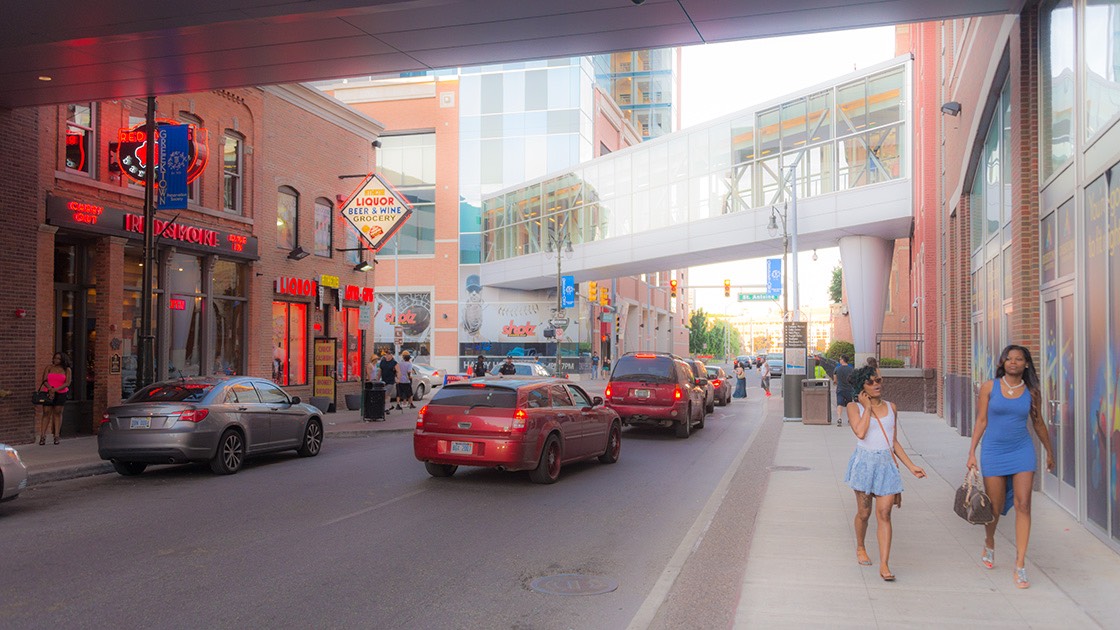
Detroit has lost all that it’s going to lose. The city has clearly turned the corner. If you didn’t get those ruin porn shots you wanted, it’s far too late now; the ruined mansions in Brush Park have either been demolished if they were too far gone, or are now being renovated. New construction seems to be everywhere.
But the most amazing thing about Detroit isn’t the buildings, but the people. Wanda and I were there in June for the Congress for the New Urbanism, and we stayed an extra day so we could walk around and see more of the city. We probably walked almost ten miles that day, and the most striking thing to see was the number of friendly people. We’re originally from the deep South, which is the region that takes great pride in the friendliness of its people, but I’ve never seen such a high proportion of friendly people in Atlanta or Charlotte.
I was first in Detroit in 1979, and it was a very different place back then. I was on a student tour of Montreal and Toronto led by our architecture professors, and Detroit was so scary at the time that we didn’t even stop, but drove straight to the border as quickly as we could. Detroit’s decline began in the 1950s, and by 1979, it was in full swing and hopelessness ran deep. And yes, I know the crime rate is still far too high, but the faces of the people make it clear that change is coming.
And no, this is not about race; it’s about hope. Insofar as I can tell, the racial mix doesn’t seem to have changed much, but the change in hope is stunning. The only race-based distinction I noticed was this: of all the people that struck up conversations with us that day, every single one was a Black person.
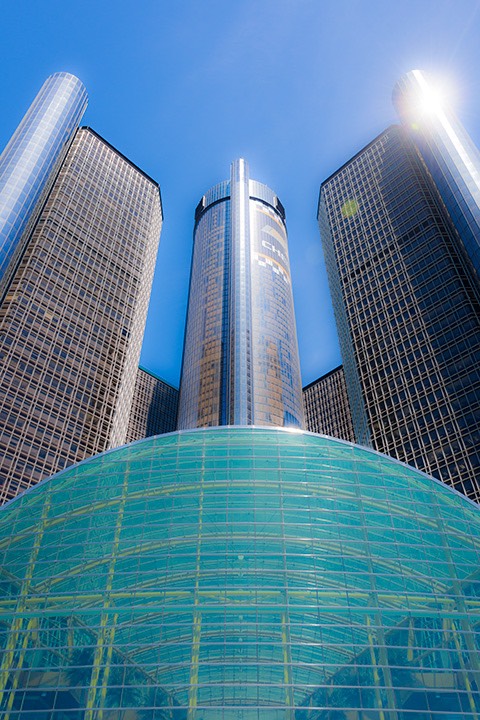
How did this come about? I’m no expert on what finally flipped the switch from hopelessness to hope for all those Detroit citizens, but it’s clear what didn’t do it. Big, gleaming mega-projects like the Renaissance Center can actually create the opposite of a renaissance because they suck vitality off the street for many blocks around. And big corporate fortresses like this can actually increase fear, as people get accustomed to making the dash from home to office parking structure in their cars as quickly as possible instead of seeing their fellow-citizens each day on the sidewalk. If you want to build a vibrant city, put many front doors on the street, and put as many offices as close to those front doors as you can. The “city within a city” model of the Renaissance Center is exactly the wrong thing to do.
Detroit’s real renaissance is now happening in many small places, not the few big ones. Walk around Brush Park, Lower Woodward, and Midtown, and you’ll find all sorts of cool stuff popping up. I can’t help but believe that a lot of the innovation is happening because the city has been so cash-strapped for the last decade that it hasn’t been able to regulate things like cities usually do. So the Millennials have just moved in, taken over buildings, and started all sorts of ventures without asking permission. The scene in the photo below is being repeated all over the city. Yes, it’s a bit like the Wild West, but we once built a nation that way.
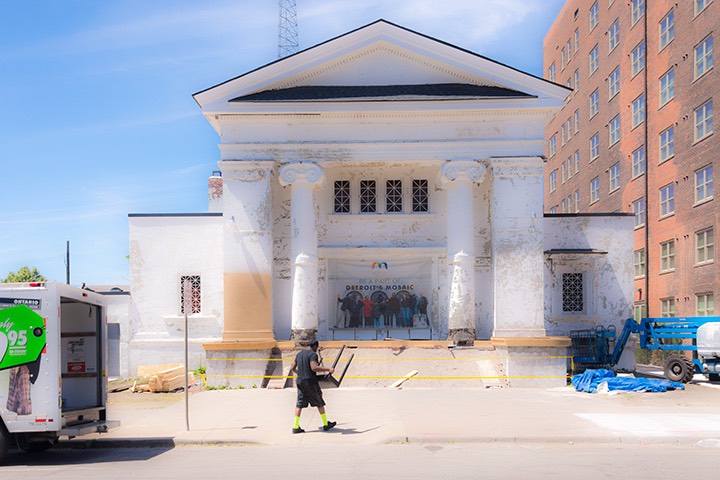
Cities in decline looking to revitalize themselves should go to Detroit and see for themselves what is going on. And then they need to ask this question: Rather than sliding to the depths of hopelessness that Detroit reached, where it was unable to regulate in a normal way and had to cease serving large swaths of the city, should we not skip the most hopeless years and lighten the burden of regulation now, so the vitality and inventiveness can get going?
There’s a Lean Urbanism movement brewing; it actually kicked off in Detroit in October, 2013. One of the central things they’re looking to establish is Pink Zones, so named because they are places where the red tape is lightened. Pink Zones aren’t totally the Wild West, but they “make small possible.” Here’s more about what Lean means.
Mark Nickita is an expert on Detroit on many counts. Here’s what he wrote about Lean Urbanism in Detroit. Several years ago, he said “Detroit is a tale of two cities, one of great hope and another of great despair, according to which streets you drive down.” Now, the hope is much easier to find. I hope the city leadership realizes the things that have tipped the balance, and continues to let the vitality and innovation flow.
~Steve Mouzon
Legacy Comments
Wanda Whitley Mouzon · University of Miami
Excellent article! I ask this question. "Are regulations going to be the downfall of this country? We are so over regulated that no one can even THINK anymore!" Lean Urbanism is truly the answer for our future!
168+


